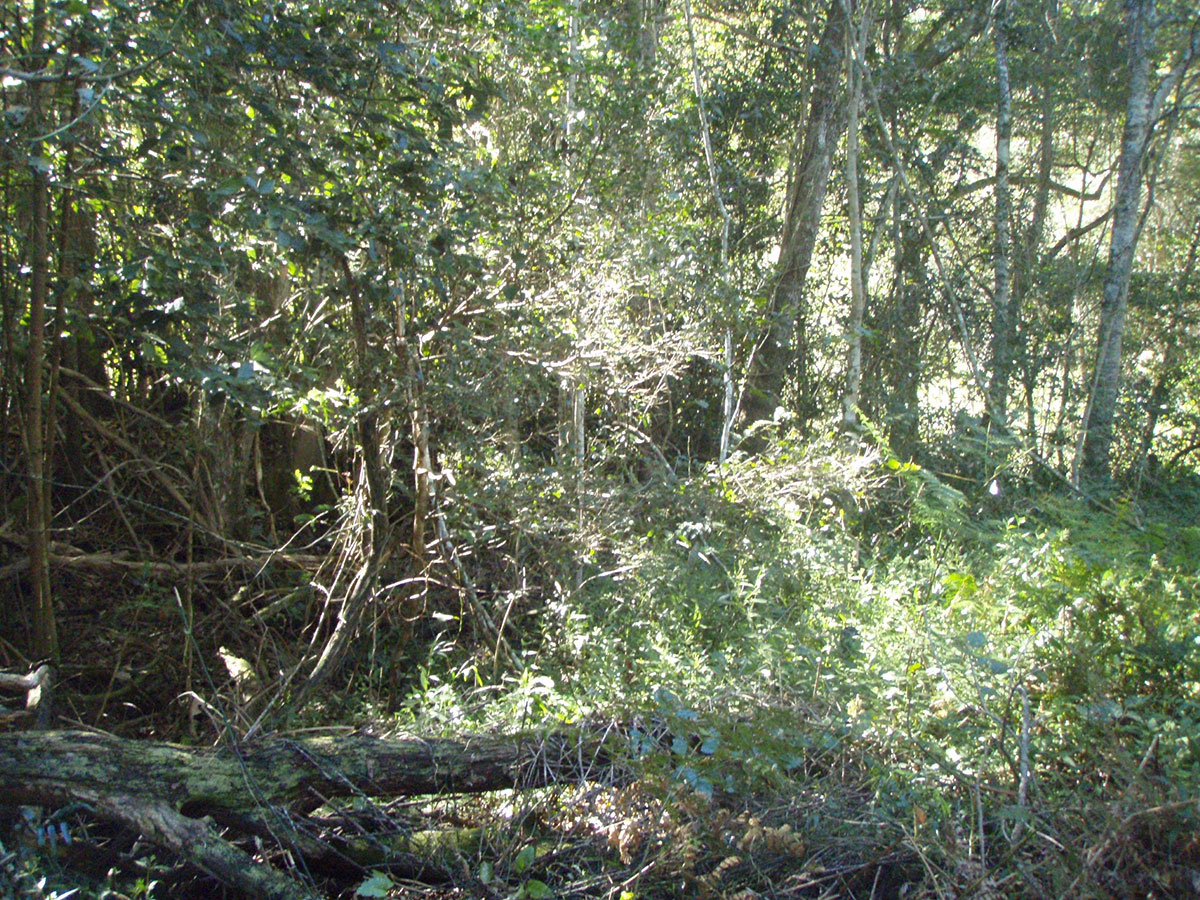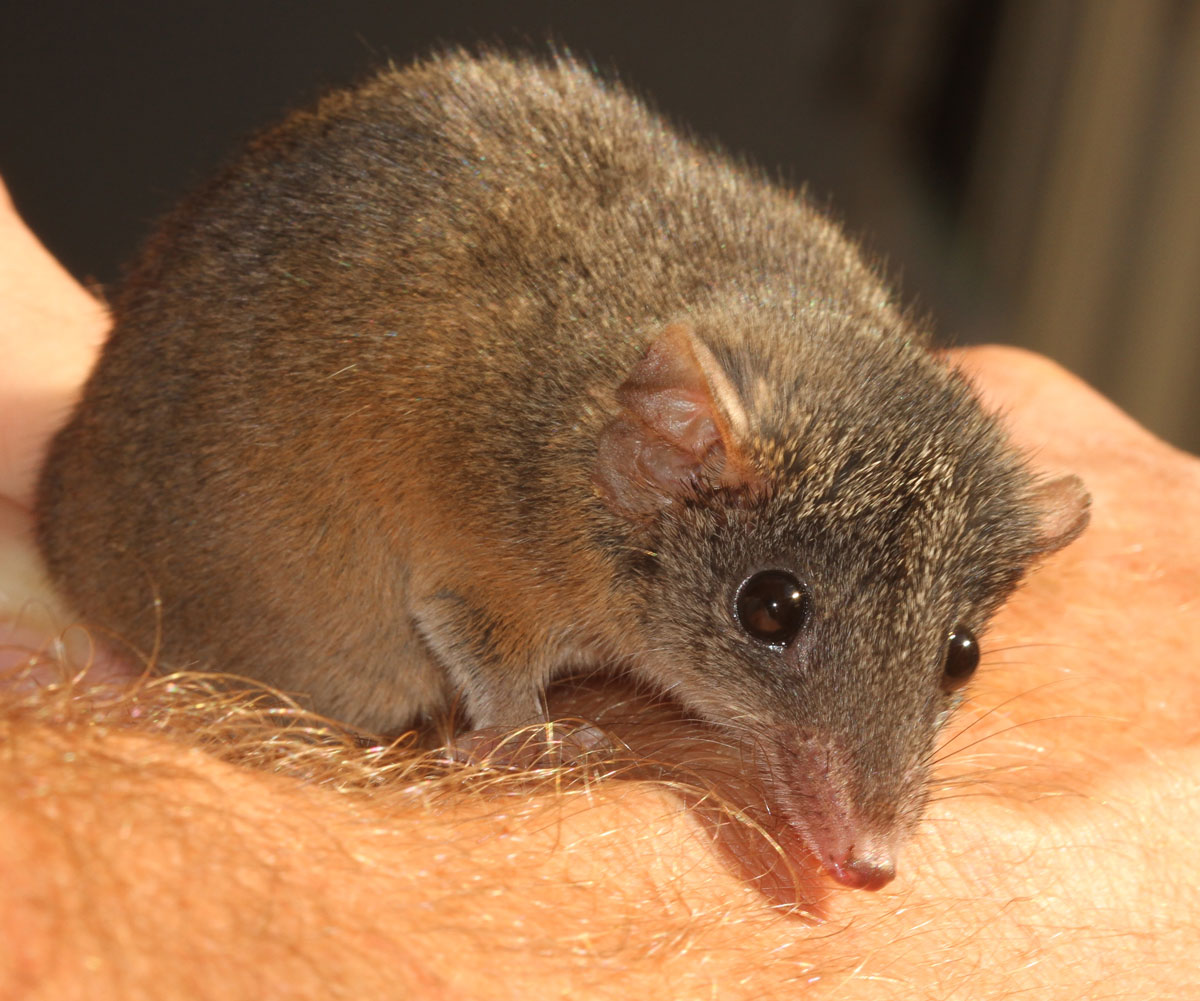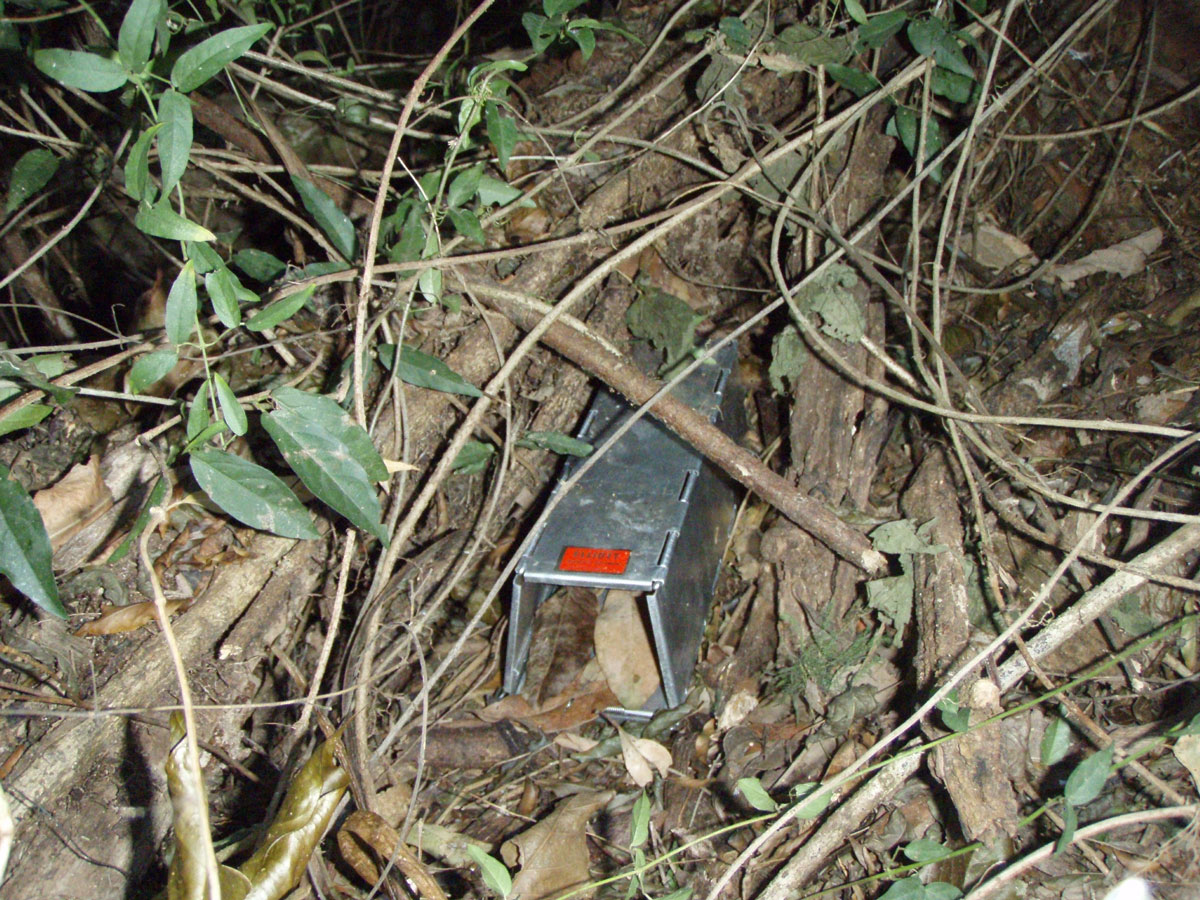In the last year of my Bachelor degree at the University of Queensland in 2008, I undertook a project surveying the mammals and reptiles at bushland restoration sites in Moggill Creek and Cubberla-Witton Creek catchments, including several Land for Wildlife (LfW) properties. It was a fantastic and insightful opportunity to see what critters were living amongst us, particularly in restored riparian habitats, where countless hours of hard work had been put in to improve the biodiversity of these areas.

Restored riparian site where the Buff – footed Antechinus was captured.
One of the small mammals I identified during these surveys was an antechinus. Antechinuses are mouse-sized, native marsupial carnivores (or dasyurids) that are short-lived and breed only once a year. They are quite unique and renowned in the animal world, in that all of the males die not long after bouts of frenzied mating over the space of just several weeks. It was exciting to catch these voracious predators during the study as they are generally uncommon in the Brisbane area. They face ever-increasing threats such as habitat loss and fragmentation, as well as predation by introduced species such as foxes and cats.

One of the Elliott traps used to solve this marsupial mystery
Back then I identified them as Yellow- footed Antechinus (Antechinus avipes), and didn’t realise that I may have been catching another species masquerading as the Yellow-footed Antechinus. For many years, Steve Van Dyck (former Senior Curator of Mammals and Birds at Queensland Museum) had been suspicious of these abnormally patterned ‘Yellow-footed Antechinus’ from around Brisbane. In 2012, he and two colleagues (Dr Andrew Baker and Thomas Mutton, QUT) genetically screened populations of antechinus and subsequently described and named a new species, the Buff -footed Antechinus (Antechinus mysticus).
 A Buff -footed Antechinus.
A Buff -footed Antechinus.
I hadn’t really given much thought about the antechinuses I caught during those surveys until this ‘new’ antechinus appeared. After becoming aware of this cryptic species, I began to question what antechinus I had really caught in 2008. The restoration sites along Gold Creek where I had surveyed looked similar to the known habitat for Buff -footed Antechinus, such as in and around D’Aguilar National Park.
A few years of pondering this small mammal conundrum led to a some keen helpers and I trapping, with relevant permits, at the same restoration sites on LfW properties (thanks to the enthusiastic landowners for allowing access) along Gold Creek. We trapped for two nights in 2014 with no luck. Obviously, perseverance was the key in getting to the bottom of this marsupial identification problem so we gave it another try in April 2015. After several nights of trapping we were finally rewarded with the cute face of a Buff – footed Antechinus staring up at us.
So after years of not giving up, it was somewhat a relief to solve this dasyurid mystery, and quite a thrill to confirm the presence of Buff -footed Antechinus so close to the Brisbane CBD. Knowing this species occurs in the Moggill Creek catchment falls an important knowledge gap. It also shows that continued efforts of restoring bushland on public and private land, particularly along waterways, may contribute significantly towards the diversity of small mammals in Brisbane.
Reference
Rowland J (2015) Diversity and abundance of small, non-gliding terrestrial mammals at bushland restoration sites in western Brisbane. The Queensland Naturalist 53.
Article and photos by Jesse Rowland Ecologist, Queensland Herbarium

G’day, I think I saw an Antechinus in our backyard. We have set up a spot light in the backyard and last night I thought I saw what looked like a rat although I was surprised to see it had a white under belly. It did appear slightly different proportional to a rat but can’t be 100% sure. I was surprised as I thought it’s fur was slightly longer then a rat and possibly with a slight different proportional snout to the size of its head. The white colour under its belly prompted me to look them up online.
I found your page and thought I’d share it with you?